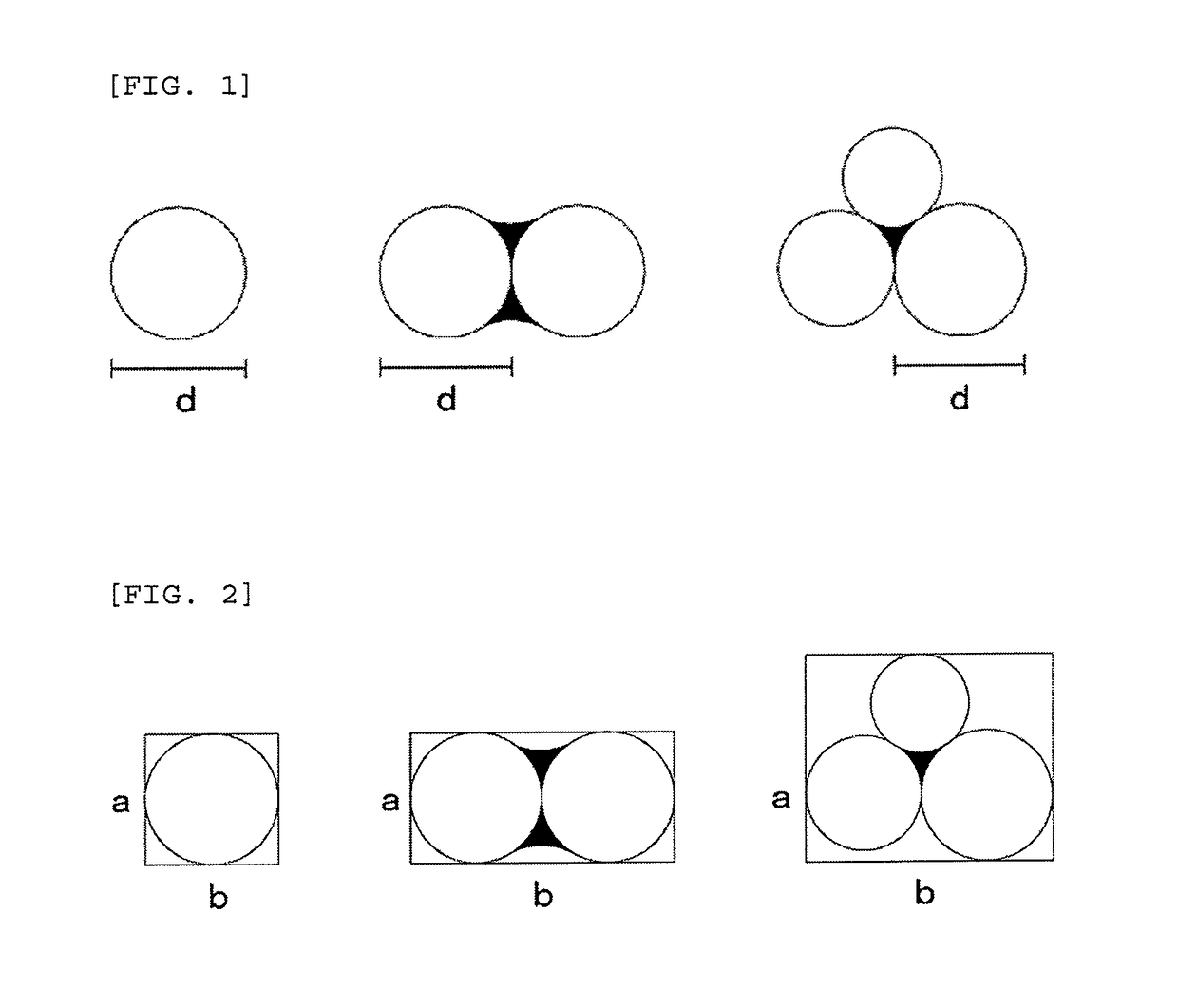Silica-based polishing particle and abrasive
a technology of polishing particle and silica, applied in the direction of silicon compounds, lapping machines, other chemical processes, etc., can solve the problems of scratching, silica polishing particle generation, scratching on the surface of polished objects, etc., to prevent the generation of scratches, prevent the formation of particle residues on the substrate, and achieve the effect of sufficient polishing ra
- Summary
- Abstract
- Description
- Claims
- Application Information
AI Technical Summary
Benefits of technology
Problems solved by technology
Method used
Image
Examples
example 1
[0082]A mixed solvent of 139.1 g of pure water and 169.9 g of methanol (manufactured by Chusei Oil Co., Ltd. (the same applies hereinafter)) was held at 60° C., and thereto 2982.5 g of a water-methanol solution of tetraethoxysilane (manufactured by Tama Chemicals Co., Ltd., Ethyl Silicate 28, SiO2=28% by mass (the same applies hereinafter)) (obtained by dissolving 532.5 g of tetraethoxysilane in 2450 g of a water / methanol (mass ratio: 2 / 8) mixed solvent) and 596.4 g of aqueous ammonia having a concentration of 0.25% by mass (catalyst / alkoxysilane mole ratio: 0.034) were simultaneously added over 20 hours. After the completion of the addition, aging was further performed at the temperature for 3 hours. Thereafter, unreacted tetraethoxysilane, methanol, and ammonia were almost completely removed with pure water through an ultrafiltration membrane, the pH was adjusted to 11 with aqueous ammonia, and aging was performed in an autoclave at 150° C. for 10 hours. Subsequently, the resultan...
example 2
[0111]A mixed solvent of 139.1 g of pure water and 169.9 g of methanol was held at 10° C., and thereto 2503.25 g of a water-methanol solution of tetraethoxysilane (obtained by dissolving 53.25 g of tetraethoxysilane in 2450 g of a water / methanol (mass ratio: 2 / 8) mixed solvent) and 596.4 g of aqueous ammonia having a concentration of 0.25% by mass (catalyst / alkoxysilane mole ratio: 0.0034) were simultaneously added over 10 seconds. After the completion of the addition, aging was further performed at the temperature for 3 hours. Thereafter, unreacted tetraethoxysilane, methanol, and ammonia were almost completely removed with pure water through an ultrafiltration membrane, the pH was adjusted to 11 with aqueous ammonia, and aging was performed in an autoclave at 100° C. for 10 hours. Subsequently, the resultant was purified with an amphoteric ion exchange resin and concentrated with an ultrafiltration membrane to afford a dispersion of a silica-based polishing particle (B) having a s...
example 3
[0113]A mixed solvent of 139.1 g of pure water and 169.9 g of methanol was held at 40° C., to which a silica-based polishing particle as a seed particle was added to a concentration of 1% by mass, and thereto 2982.5 g of a water-methanol solution of tetraethoxysilane (obtained by dissolving 532.5 g of tetraethoxysilane in 2450 g of a water / methanol (mass ratio: 0.5 / 9.5) mixed solvent) and 596.4 g of aqueous ammonia having a concentration of 0.25% by mass (catalyst / alkoxysilane mole ratio: 0.034) were simultaneously added over 20 hours. After the completion of the addition, aging was further performed at the temperature for 3 hours. Thereafter, unreacted tetraethoxysilane, methanol, and ammonia were almost completely removed with pure water through an ultrafiltration membrane, the pH was adjusted to 11 with aqueous ammonia, and aging was performed in an autoclave at 200° C. for 20 hours. Subsequently, the resultant was purified with an amphoteric ion exchange resin and concentrated w...
PUM
| Property | Measurement | Unit |
|---|---|---|
| average particle diameter | aaaaa | aaaaa |
| aspect ratio | aaaaa | aaaaa |
| aspect ratio | aaaaa | aaaaa |
Abstract
Description
Claims
Application Information
 Login to View More
Login to View More - R&D
- Intellectual Property
- Life Sciences
- Materials
- Tech Scout
- Unparalleled Data Quality
- Higher Quality Content
- 60% Fewer Hallucinations
Browse by: Latest US Patents, China's latest patents, Technical Efficacy Thesaurus, Application Domain, Technology Topic, Popular Technical Reports.
© 2025 PatSnap. All rights reserved.Legal|Privacy policy|Modern Slavery Act Transparency Statement|Sitemap|About US| Contact US: help@patsnap.com


